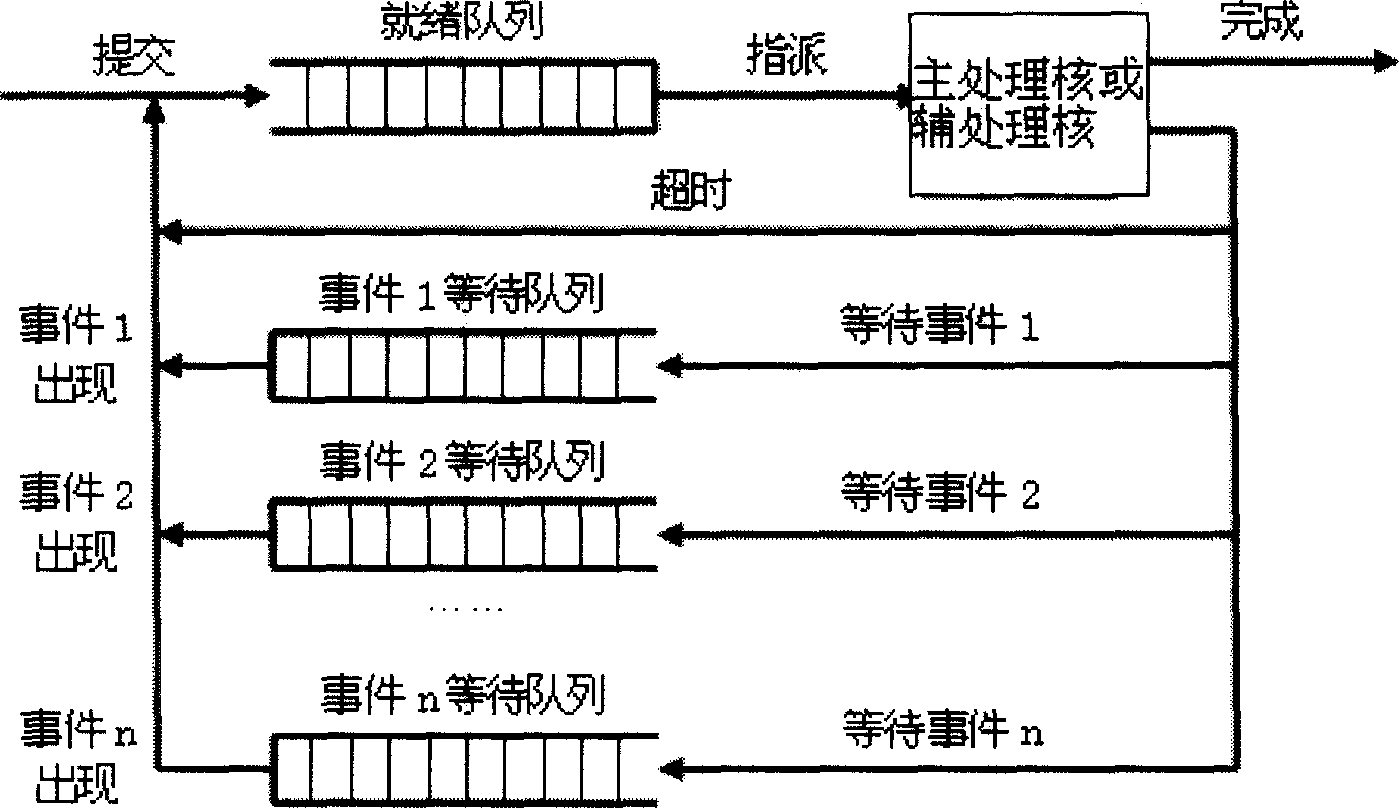Heterogeneous multi-core system-oriented process scheduling method
A process scheduling, heterogeneous multi-core technology, applied in the direction of multi-programming device, resource allocation, etc., can solve the problems of slow response speed and increase of total time, and achieve the effect of load balancing
- Summary
- Abstract
- Description
- Claims
- Application Information
AI Technical Summary
Problems solved by technology
Method used
Image
Examples
Embodiment Construction
[0028] 1) Implementation of process allocation strategy
[0029] In the heterogeneous multi-core system, all processing is not exactly the same, but consists of a master general-purpose processing core and several identical auxiliary processing cores, but all processing is the same in terms of data operations, that is The main memory and I / O devices are accessed in the same way, all of which are processed separately for the main processing core, while other multiple auxiliary processing cores are treated as a processing core pool.
[0030] Adopting a dynamic allocation strategy, the operating system maintains a common ready queue for all processing cores, and each ready process has a flag to mark whether the process is running on the main processing core or the auxiliary processing core. When a processing core is idle, a ready process is selected from the corresponding ready queue to run on the processing core. As shown in the figure, the ready queue model is outlined.
[00...
PUM
 Login to View More
Login to View More Abstract
Description
Claims
Application Information
 Login to View More
Login to View More - R&D
- Intellectual Property
- Life Sciences
- Materials
- Tech Scout
- Unparalleled Data Quality
- Higher Quality Content
- 60% Fewer Hallucinations
Browse by: Latest US Patents, China's latest patents, Technical Efficacy Thesaurus, Application Domain, Technology Topic, Popular Technical Reports.
© 2025 PatSnap. All rights reserved.Legal|Privacy policy|Modern Slavery Act Transparency Statement|Sitemap|About US| Contact US: help@patsnap.com

